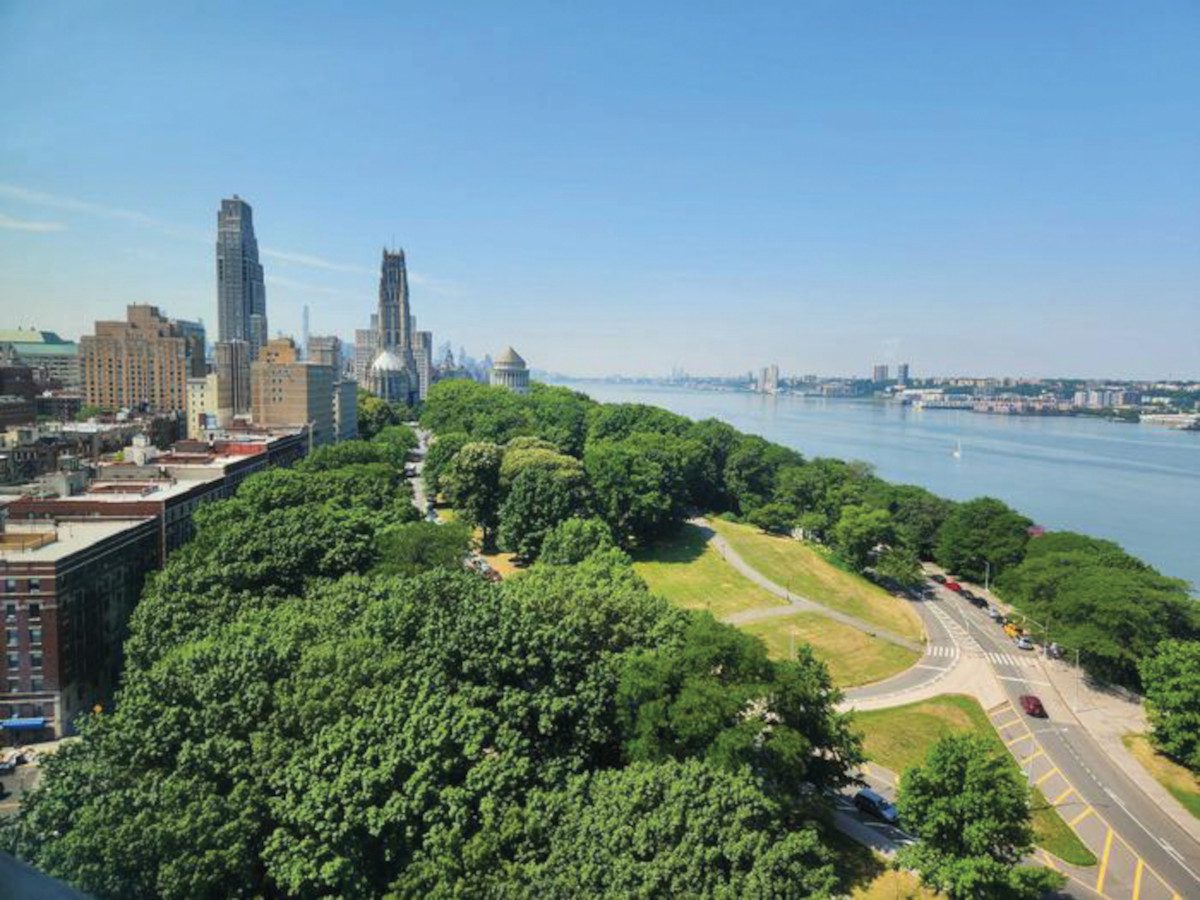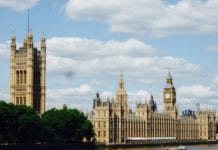
Planting trees may worsen, not improve, New York City air, says a new study, since interactions with man-made pollutants can create ozone.
New York City is planting tens of thousands of trees each year. They provide shade, lower surface temperatures by releasing moisture, absorb a surprising amount of airborne carbon, scrub out soot and other floating pollutants, and provide wildlife habitat along with just plain beauty. What could go wrong?
Something could go wrong, according to a new study. Oaks and sweetgums, which currently account for a majority of the city’s trees, produce huge amounts of volatile compounds called isoprenes. Harmless by themselves, isoprenes interact rapidly with polluting nitrogen oxides emitted by vehicles, buildings and industry to form ground-level ozone―a prime factor in many respiratory ailments, especially chronic bronchitis and asthma.
The research, carried out at the Columbia Climate School’s Lamont-Doherty Earth Observatory and other institutions, appeared to find that if the city maintains past species patterns in new plantings, isoprene production in Manhattan in coming decades will go up by about 140%, and resulting summer ozone levels by as much as 30%. In Queens, which has the most room of any borough to support more trees, isoprene production could quadruple, with corresponding increases in peak ozone; the other boroughs are somewhere in between. The study was published in Environmental Science & Technology.
“We’re all for planting more trees. They bring so many good things,” said study coauthor Róisín Commane, an atmospheric chemist at Lamont-Doherty. “But if we’re not careful, we could make air quality worse.”
“There is no reason to think that trees don’t play a role in what’s in the air,” said lead author Dandan Wei, who did the research as a postdoctoral scientist at Lamont-Doherty. “We just didn’t have the tools before this to understand this particular aspect.”
The leaves of some tree species emit isoprene as a byproduct of photosynthesis, though no one is quite sure why. With oaks, emissions tend to increase exponentially with heat, at least until air temperatures reach the high 90s. Some scientists think this helps keep leaf tissues from drooping and losing their ability to photosynthesize as it gets hotter. Emissions of these and other volatile compounds by trees may also have something to do with attracting pollinating insects. For whatever reason, oaks and sweetgums are especially prolific; oaks emit some 800 times more isoprene than low emitters like maples or London planes. (Fun fact: the oak-rich Blue Ridge Mountains get their bluish tinge when seen from afar due to vast amounts of isoprene and other volatile compounds reacting indirectly with water to form tiny floating droplets.)
New York City is home to some seven million trees, covering 22% of the surface, according to the city Parks Department. Parks and forests contain some five million, of which more than half are oaks of various kinds and sweetgums (37% and 17% respectively). On the streets, (close to 700,000 trees at last count), oaks comprise 18% and sweetgums just a small number. London planes are the most common street trees, comprising a third. Some 130 other species account for the rest.
The authors of the study analyzed newly available satellite imagery showing the city’s tree canopy in 30-by-30-meter grids, and combining it with 2016 and 2018 Parks Department censuses of tree species. This was combined with data from scientists including study coauthor Andrew Reinmann, an environmental ecologist who does lab experiments on tree leaves to measure their isoprene production under different conditions. The researchers scaled up the lab data to the city’s actual tree coverage, and modeled how trees interact with tailpipe and building emissions of NOx.
They found that emissions from trees play a controlling role in the formation of ozone on hot summer days, when levels routinely exceed the federal safety levels of 70 ppb. Levels sometimes now reach 100 ppb; the addition of new trees could eventually drive it up even further, says the study.
New York has made some headway at reducing nitrogen oxides in recent years, but the pace has been agonizingly slow. The study says that at current rates of 2% to 5% a year, it would take 30 to 80 years for the city to reduce emissions by a factor of five―the level at which emissions from trees would no long play a role in ozone formation.
No quick fix appears to be imminent. In June, New York Gov. Kathy Hochul canceled a plan decades in the making to reduce vehicle traffic by imposing congestion pricing in Manhattan. Meanwhile, the City Council passed a 2023 resolution calling for an increase in tree-canopy coverage from its current 22% to at least 30% by 2035. This would require 250,000 new trees.
A 2018 study carried out by Parks Department researchers concluded that city trees emit more than 800 tons of volatile compounds each year, including isoprene. But both the researchers of this study and the Parks Department have preferred to position blame with vehicle engines rather than trees.
The department has already reduced the proportion of oaks it plants in favor of a more diverse mix―but more because of a need to diversify species rather than because of the isoprene question.
“We’re not going to go cutting down any big old oaks,” and neither will the department completely stop planting new ones, said Auyeung. “You have to think about what you would lose if you do that.” Oaks are keystone species, she pointed out, providing food and habitat for native insects, birds and mammals.






